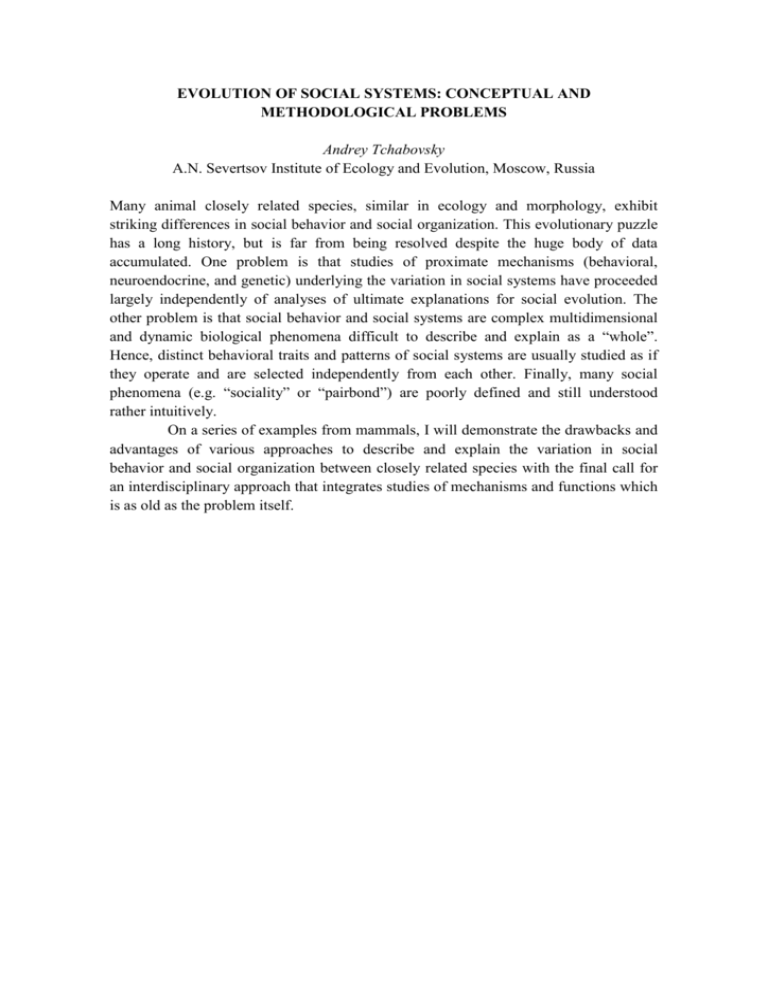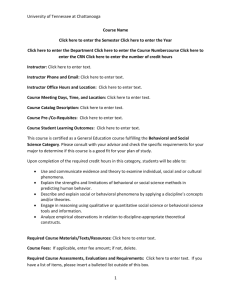ABSTRACT FORM
advertisement

EVOLUTION OF SOCIAL SYSTEMS: CONCEPTUAL AND METHODOLOGICAL PROBLEMS Andrey Tchabovsky A.N. Severtsov Institute of Ecology and Evolution, Moscow, Russia Many animal closely related species, similar in ecology and morphology, exhibit striking differences in social behavior and social organization. This evolutionary puzzle has a long history, but is far from being resolved despite the huge body of data accumulated. One problem is that studies of proximate mechanisms (behavioral, neuroendocrine, and genetic) underlying the variation in social systems have proceeded largely independently of analyses of ultimate explanations for social evolution. The other problem is that social behavior and social systems are complex multidimensional and dynamic biological phenomena difficult to describe and explain as a “whole”. Hence, distinct behavioral traits and patterns of social systems are usually studied as if they operate and are selected independently from each other. Finally, many social phenomena (e.g. “sociality” or “pairbond”) are poorly defined and still understood rather intuitively. On a series of examples from mammals, I will demonstrate the drawbacks and advantages of various approaches to describe and explain the variation in social behavior and social organization between closely related species with the final call for an interdisciplinary approach that integrates studies of mechanisms and functions which is as old as the problem itself.











